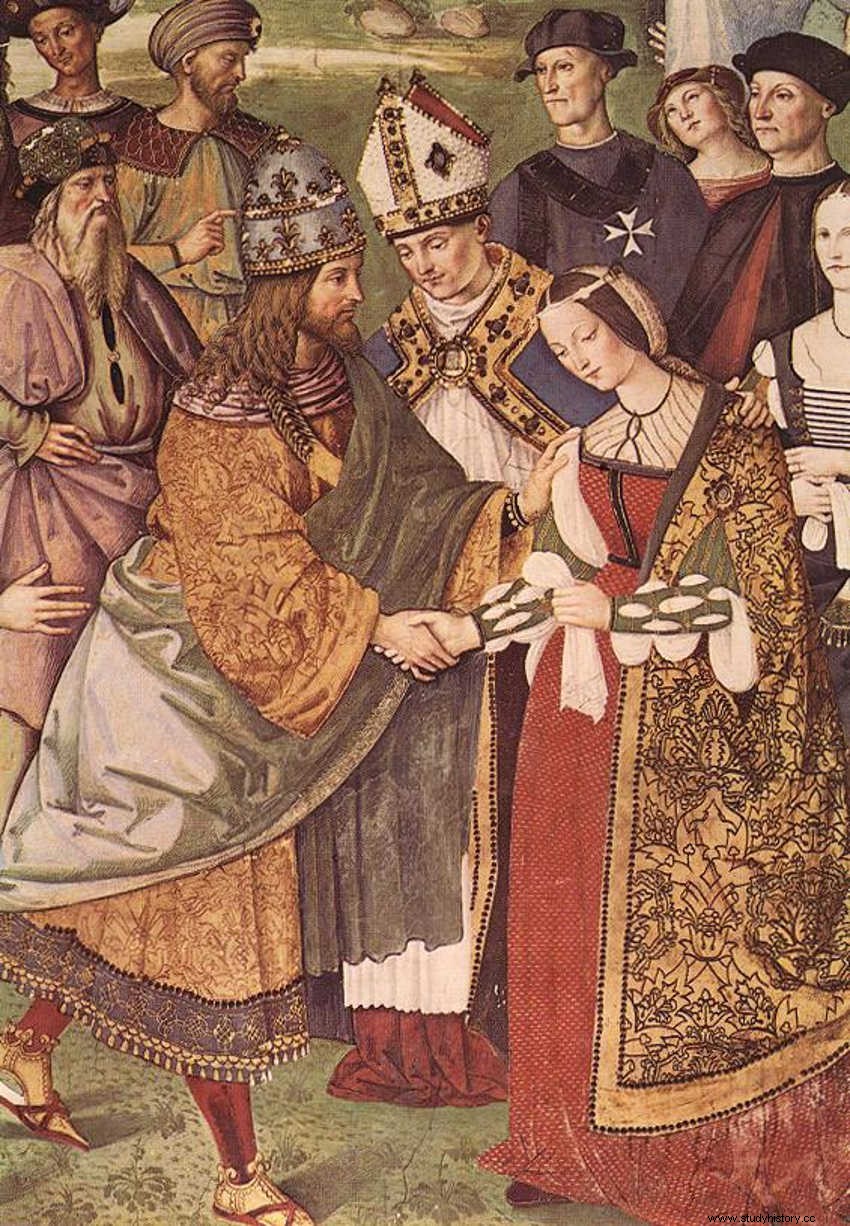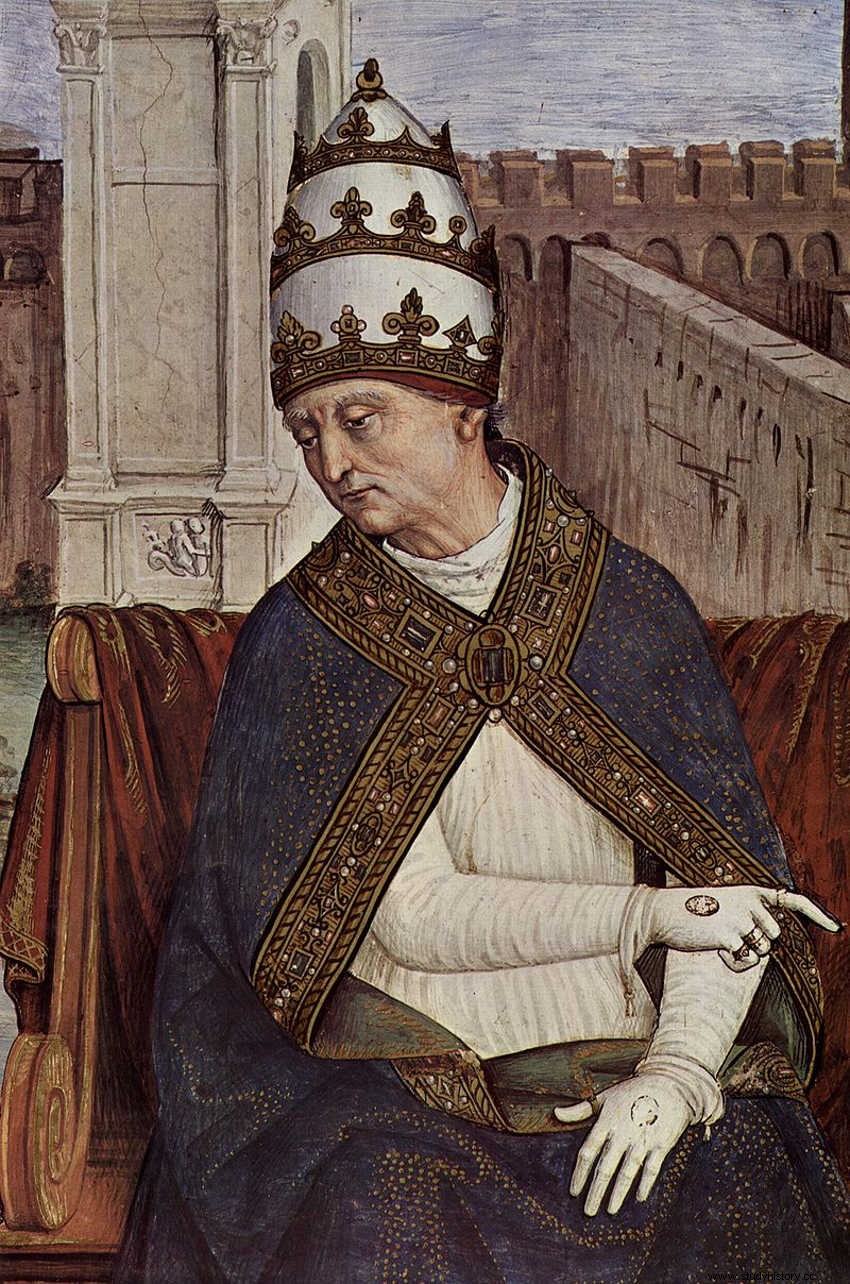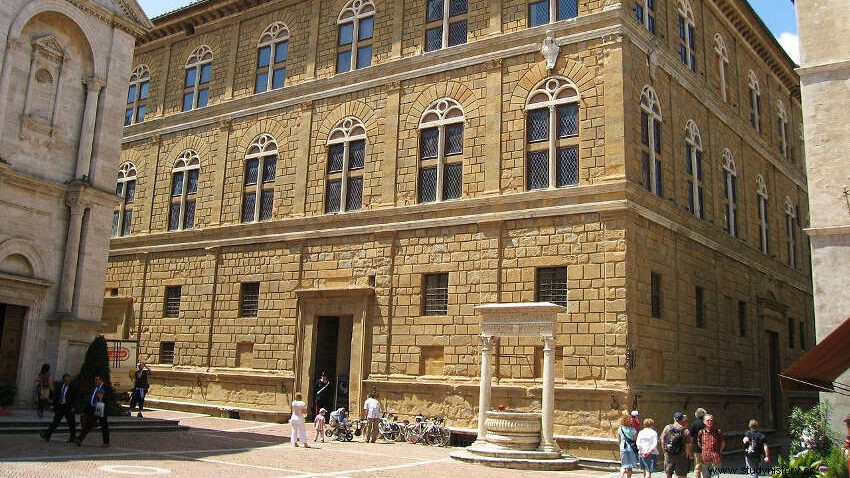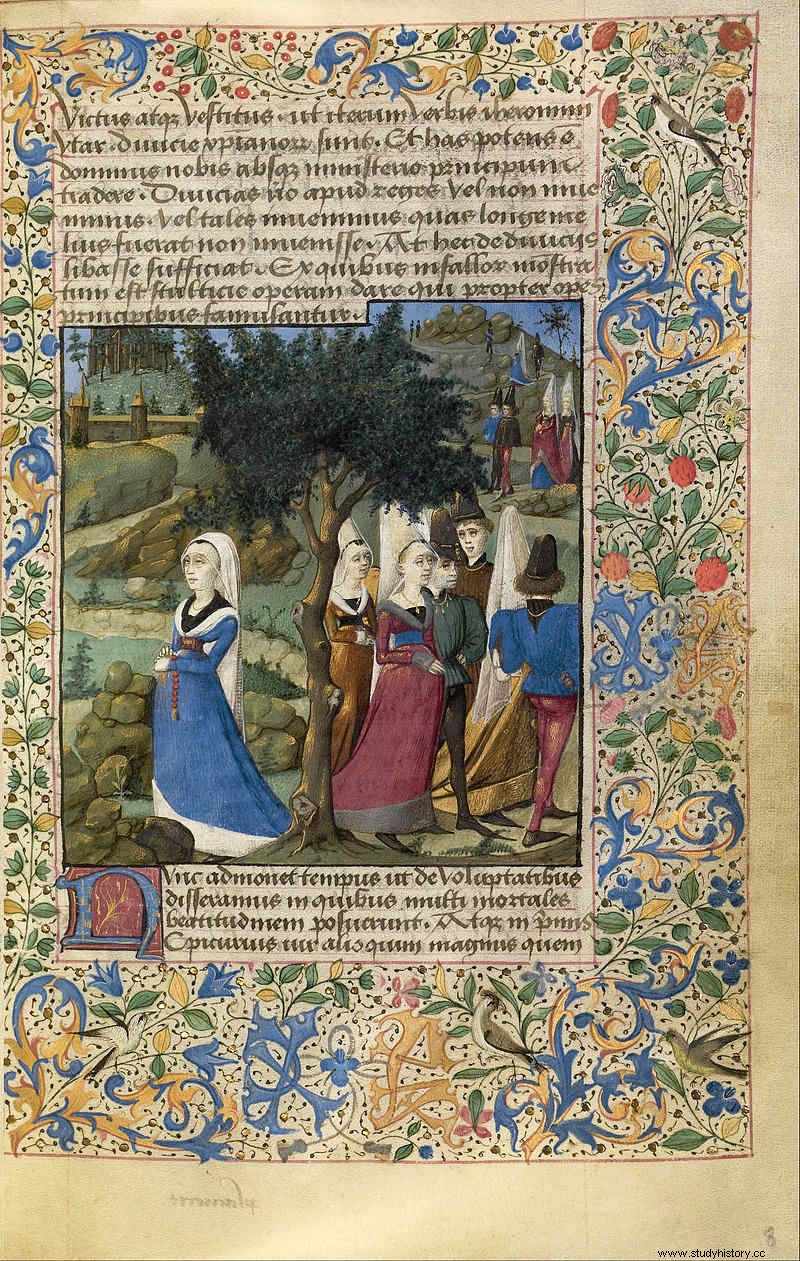“Love conquers all; let us give in to love.” This beautiful phrase belongs to one of the most popular literary works of the fifteenth century, a true best seller of that time of change that was the transition from the Late Middle Ages to the Renaissance. I mean Story of duobus amantibus or A story of two lovers , which had no less than thirty-five editions before the year 1500, not counting the thousand manuscript copies.
But what is really curious about this text is not so much its success as its author; His name was Aeneas Sylvius Piccolomini and he would go down in history with the name of Pío II after being elected pope. Aeneas Silvio Piccolomini born in 1405 in Corsignano , a Tuscan town renamed today as Pienza and which was then one of the strategic corners of that complex puzzle of alliances and enmities that was northern Italy.
His family took part in that game, his father fighting in the service of the Milanese Visconti. Thanks to this, he was able to buy some land with which to try to leave behind the economic problems that had gripped them for some time, something unworthy of his noble blood .

Aeneas was just one of many brothers (eighteen!), although most of them died and this allowed him to move to Siena to study law , although later he would continue at the University of Florence. He had illustrious teachers who instilled in him an interest in the humanities , passing these to be his great hobby so that he became a great Latinist who even composed poems in that language and taught classes on his own.
In 1431 he was hired as secretary by Bishop Domenico Capranica, whom he accompanied to the Council of Basel and on many other trips around Europe :Frankfurt, Burgundy, England, Scotland... always exercising diplomatic tasks on various issues; among them was especially the mediation of conflicts , case of the Hundred Years War or the Eastern Schism, although he also tried to encourage a Scottish uprising against the English for the benefit of France. Thanks to all this he obtained recognition and important gifts were granted to him.
After nearly dying of the plague in 1429 he went to Strasbourg in the service of Antipope Felix V , whose legitimacy he had supported; In this city, just as he had done before in Scotland, he fathered a son with a married woman who scarcely survived more than a year.
He himself would recognize the many love affairs of his , as intense as they are ephemeral since later "they caused him great annoyance" according to his own words, and we must not forget that he had directed his life towards a religious vocation.

In fact, he was later hired by Emperor Frederick III to negotiate his marriage with the Portuguese Leonor, he mediated with the Hussites and was commissioned to try to reconcile the Sente Sede with the Holy Roman Empire, which finally earned him the priestly dignity ; he was forty years old.
Pope Nicholas V, who had been his fellow student decades earlier, appointed him Bishop of Trieste in 1447 and of Siena two years later. Then, in 1456, Calixtus III promoted him to the cardinalship in what was a truly meteoric run.
Probably neither of them imagined that a little later, in 1458, Aeneas would be elected new pontiff . True to his resume, he continued his conciliatory work with the endless Italian political conflicts while, logically, tempering his previous positions against the excess of authority of the Holy See.
On the throne of Saint Peter he developed a long legislative work with many shovelfuls of lime (canonization of Saint Vincent Ferrer, mediation between Frederick III and the Hungarian king Matthias Corvinus, foundation of the University of Basel or the declaration of slavery as a crime) and some sand (Favoring positions and wealth to his relatives, renaming his hometown as Pienza in his own honor or offering the Byzantine Empire to Sultan Mehmet II in exchange for his conversion to Christianity, which offended the aforementioned and unleashed a war).
Pius II fell ill with a fever when he was visiting Ancona, where he had traveled to encourage the Hungarians and Venetians, allied against the Turks, dying on August 14, 1464 . His legacy is patent and visible in Corsignano, where he did not limit himself to changing its name but also promoted the construction of numerous buildings in the Renaissance style.
For this he hired the illustrious architects Bernardo Gambarelli and León Battista Alberti, who erected the Duomo -consecrated by Pius II in person in 1462-, one of the main attractions of the place together with the Palazzo Piccolomini . Due to this urban embellishment, Pienza is part of the World Heritage Site of UNESCO since 1994.

Now, what has made this pope earn a special place in history is his previous literary production. As a good humanist he touched several genres, from the historical chronicle ( Historia rerum Federici III imperatoris, Historia Gothorum, Historia Bohemica ) to the scientific (Cosmographia ), through the political-religious (Commentarii de gestis Basiliensis Concilii ) and the autobiography (Commentarii rerum memorabilium quae temporibus suis contigerunt , written in the third person under the pseudonym Scribe Gobellinus and published twenty years after his death).
Also literature, of course, section in which he was highly applauded. He composed several comedies and not a few poems with an erotic tone . The aforementioned Story of two lovers (also titled in Spain Very true story of two lovers ) is also part of that line, something that a posteriori it embarrassed the Pope, who said about it:«Do not give more importance to the laity than to the pontiff; reject Aeneas, welcome Pius» .
However, the piece circulated from hand to hand and in 1467 the first printed version was made in Cologne, reaching our days full of modernity and translated into multiple languages (into Castilian in 1496 for the first time, clearly influencing some works such as La celestina ).

Written in Vienna in 1444, inspired by the Elegia di Madonna Fiammetta from Bocaccio, A Tale of Two Lovers It is an epistolary novel (that is, narrated in the form of letters) whose argument takes place in Siena, telling the love between Lucrecia and Euríalo, a married noblewoman and one of the men of the Duke of Austria.
Both are in love with each other without realizing that it is something reciprocal, trying to be honest through correspondence. Love is presented in a negative way, as a deceitful and uncontrollable force , typical of young people, and that consumes those who suffer from it; therefore, the tone is didactic , hence it does not have a happy ending.
Interestingly, some scholars -not all- believe that the protagonists were based on real characters :she would be a daughter of Mariano Sozzini (the law professor that the young Aeneas had at the University of Siena) and he Kaspar Schlick, chancellor of the Holy Roman Empire (during the mandate of Sigismund of Luxembourg), who had been a patron of the poet in 1442.
